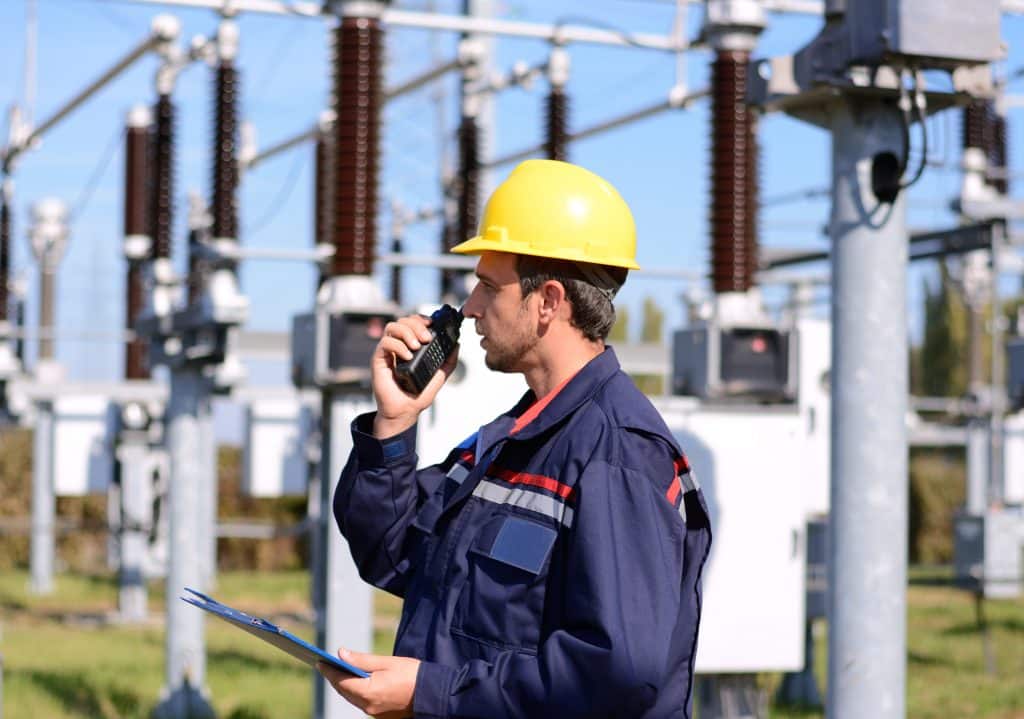
When it comes to portable communication devices, there’s often confusion between the terms “two-way radio” and “walkie talkie”. While they may seem similar, there are distinct differences in functionality, range, and usage that make each suitable for specific situations.
Explore the distinctions between two-way radios and walkie talkies, discover how they work, and learn about their practical applications, particularly in regions like Western Canada.
What is a Two-Way Radio?
Two-way radios are versatile communication devices capable of both transmitting and receiving radio signals, allowing for bidirectional communication. This capability is crucial in settings where immediate and reliable communication is essential, such as among emergency responders, military operations, and within various commercial industries. Two-way radios are particularly beneficial in large-scale operational environments — from sprawling industrial sites to extensive outdoor recreational areas.
Unlike standard consumer electronics, two-way radios are built to operate on specific radio frequencies and usually require a license for operation. This licensing ensures frequencies are not overcrowded and that communications remain clear and private, a critical requirement for professional communications. These devices can be configured with specific frequencies and encryption codes to secure communications, making them ideal for professional settings where confidentiality and clarity are paramount.
In addition to their secure communication capabilities, two-way radios are designed for durability and long-term use, even under harsh conditions. Many models are built to military and IP specifications to withstand extreme weather, drops, shocks, and other environmental challenges. This robustness makes them invaluable tools in regions like Alberta, where weather conditions can vary significantly and impact communication.
Moreover, two-way radios come equipped with various features that enhance their utility. These include long battery life, GPS tracking, emergency alert buttons, and the ability to connect to a wide network of other radios. This connectivity is particularly useful in vast and remote areas of Western Canada, where traditional communication systems might fail.
Professionals in sectors such as construction, oil and gas, forestry, and public safety rely heavily on two-way radios for day-to-day communications. In these sectors, the ability to communicate across large distances, often in the absence of cellular coverage, is not just a convenience — it’s a necessity for operational safety and efficiency.
Walkie Talkie vs Radio
The terms “walkie talkie” and “two-way radio” are often used interchangeably, but there are specific differences that distinguish walkie talkies from their more robust counterparts in the two-way radio category. Understanding these differences is crucial when selecting the right device for communication needs, whether for casual or professional use.
Walkie talkies are a type of two-way radio, but they are usually designed for personal or casual use rather than for professional communication environments. These devices are noted for their portability, ease of use, and accessibility. Walkie talkies are compact and lightweight, making them ideal for carrying around during recreational activities such as hiking or camping.
One of the main differences between walkie talkies and two-way radios is their power output and consequently their range. Walkie talkies typically have a lower power output, which limits their communication range to shorter distances. This is usually sufficient for consumer needs where extensive range is not a priority, such as coordinating activities in a park or at a local event. However, for more demanding professional uses, such as coordinating work on a large construction site or within emergency response scenarios in places like Edmonton or Calgary, the greater power and range capabilities of two-way radios are necessary.
Moreover, walkie talkies usually operate on fixed channels within public frequency bands that are available for anyone to use. This can lead to potential interference from other users, which might be a concern in crowded or public spaces. Unlike walkie talkies, two-way radios often support a broader range of frequencies and can be programmed with private channels and codes to enhance security and reduce interference, an important feature in professional communications.
Another key aspect where two-way radios differ significantly from walkie talkies is in their feature sets. Professional two-way radios can include advanced features such as encryption, and man-down. These features are essential for professional teams in industries like public safety and security, where coordination and response time are critical.
How Do Walkie Talkies Work?
The basic operation of walkie talkies starts with the conversion of your voice into a radio signal. When you speak into a walkie talkie, your voice is first captured by a microphone. It is then converted into a radio frequency signal that gets transmitted through the air using an antenna. This signal travels over a designated frequency to all other walkie talkies tuned to the same channel within range, where it is received by the antenna of these devices.
Upon receiving the signal, the walkie talkie converts it back into sound using a speaker, allowing the listener to hear the message. This process happens almost instantaneously, making walkie talkies highly effective for real-time communication. Most walkie talkies operate using a ‘push-to-talk’ (PTT) mechanism, which requires the user to press a button to talk and release it to listen, ensuring that only one person can speak at a time, thus avoiding communication overlap and confusion.
Walkie talkies typically operate on public frequency bands such as the Family Radio Service (FRS) or General Mobile Radio Service (GMRS) in North America. These bands are regulated by national communications authorities, which designate specific frequencies for non-commercial use without the need for a license (in Canada). This regulation helps to manage the airwaves but also means that users might experience interference from other nearby devices on the same channel.
Despite their simplicity, walkie talkies have a few limitations. One of the main questions about these devices is “What is the Range of Walkie Talkies?” Their range is often subject to environmental factors. For instance, the presence of buildings, trees, or even the topology of the landscape, can obstruct the signal, reducing the effective communication distance. Additionally, since they operate on public channels, walkie talkies do not offer private communication, which could be a drawback for users needing confidentiality.
Contact Tridon Communications Today
Deciding between a two-way radio and a walkie talkie largely depends on your specific communication needs. For extensive, secure, and professional communications, two-way radios are the superior choice. They offer enhanced functionality and adaptability, which are crucial in areas like Western Canada, where geographical features can pose significant challenges to communication.
For every day and recreational uses, walkie talkies provide a convenient and cost-effective communication solution. These devices allow for easy coordination in environments where advanced features and extended ranges are not necessary.
Contact Tridon Communications today to explore our range of products and services to enhance your communication capabilities. Let us help you stay connected, no matter where you are or what challenges you face.



